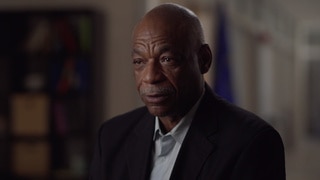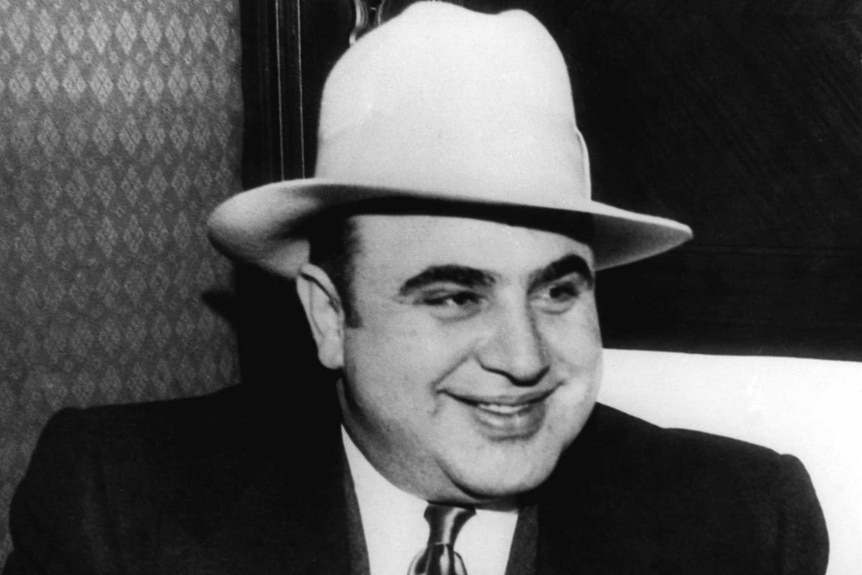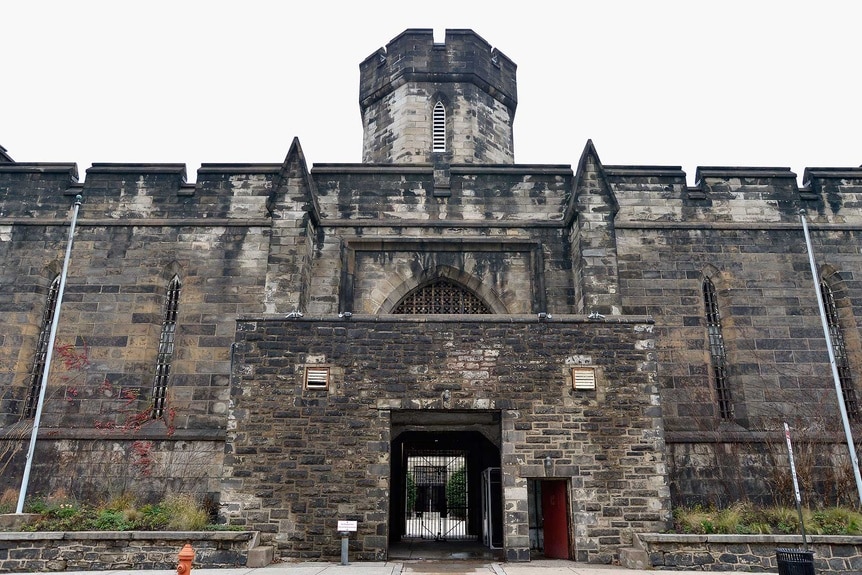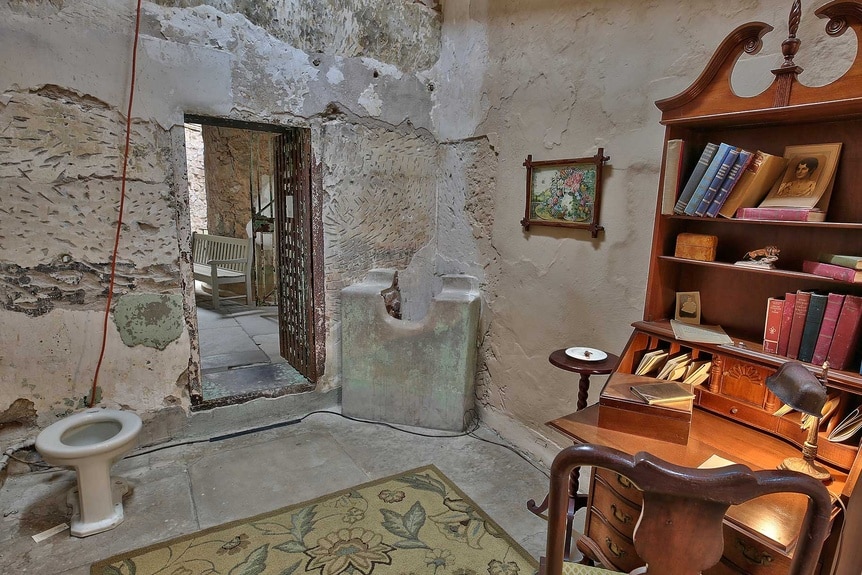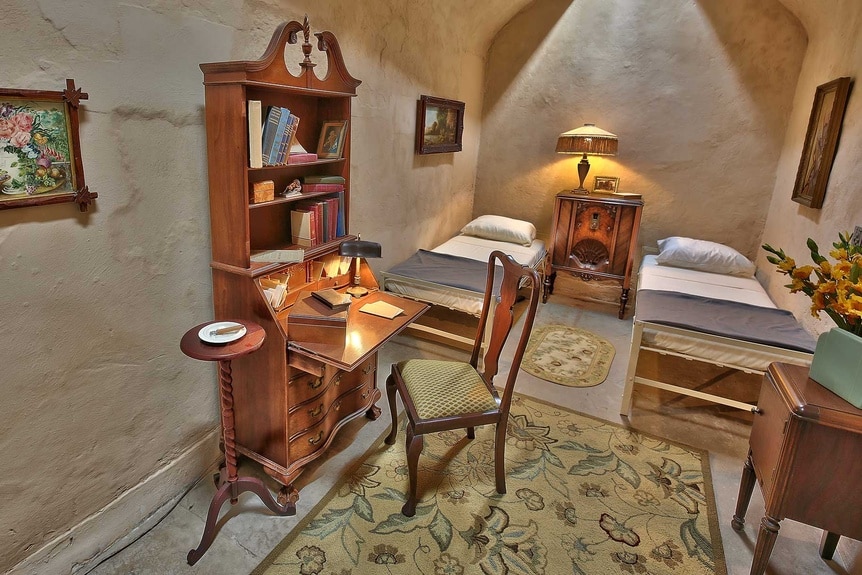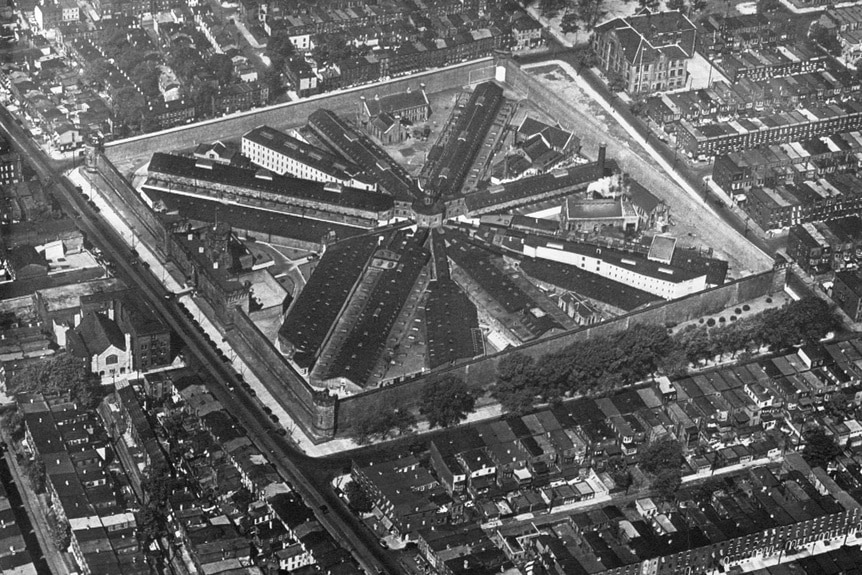Create a free profile to get unlimited access to exclusive videos, breaking news, sweepstakes, and more!
A Look at Al Capone's Stay in a Philadelphia Prison Ahead of New True Crime Show Philly Homicide
After the notorious crime boss was arrested outside a Philadelphia movie theater in 1929, his conviction led to a stay at Eastern State Penitentiary, "designed to inspire... true regret, in the hearts of prisoners.”
One of the most notorious criminals in America did a stint behind bars at a Philadelphia prison that now hosts haunted houses during Halloween season.
Prohibition-era gangster Al Capone, the organized crime boss who is suspected of being behind the St. Valentine’s Day Massacre of 1929, was surprisingly never convicted of a violent crime, despite the high body count during his reign as a mob boss in Chicago’s gang era in the 1920s and ’30s.
But one conviction did lead to him being locked up in Philadelphia, a city that's the focus of the upcoming Oxygen original series, Philly Homicide, premiering Saturday, October 26 at 9 p.m.
Here's a detailed look at Capone’s incarceration in a city otherwise known as being the birthplace of American liberty.
Did Al Capone stay in a Philadelphia prison?
Yes, the man nicknamed “Scarface” did a stint at the historic Eastern State Penitentiary in Philadelphia, as detailed on the official website for the former prison, which is now a National Historic Landmark and museum. It was his first conviction, but wouldn't be his last.
On May 17, 1929, Capone and his bodyguard were picked up in Philadelphia while on their way from Atlantic City, New Jersey, back home to Chicago. They were arrested outside a movie theater on concealed weapons charges when Capone was found with an unlicensed .38 caliber revolver.
Justice was swift, and within 16 hours of the double arrest, both were slapped with one-year prison terms.
Some, according to The Patriot-News, accused the gangster of tipping off authorities and staging his own arrest after being believed to have been behind the St. Valentine’s Day massacre, which took place three months earlier. During the massacre, seven rival gangsters were lined up against a wall and slain by machine guns. Capone was in Florida at the time of the mass shooting, according to the FBI. But suspicions that he was the ringleader would have made him a target for rival gangs.
Capone was ultimately transferred to Eastern State Penitentiary, where he spent a little more than seven months. He was released on March 17, 1930, for good behavior, according to the FBI.
The history of Eastern State Penitentiary
The prison operated between 1829 and 1971 and now stands as a museum open to the public in Philadelphia’s Fairmont neighborhood. The sprawling landmark is known for its neo-gothic architecture and hosts events every Halloween season, including haunted houses, themed bars and lounges, and live entertainment inside the walls of the shuttered 10-acre prison.
“Eastern State Penitentiary was once the most famous and expensive prison in the world but stands today in ruin, a haunting world of crumbling cellblocks and empty guard towers,” the museum’s website reads. “Known for its grand architecture and strict discipline, this was the world’s first true ‘penitentiary,’ a prison designed to inspire penitence, or true regret, in the hearts of prisoners.”
Capone wasn’t the only high-profile prisoner to serve time within its walls. Bank robber William “Slick Willie” Sutton got 25 to 50 years for the 1933 attempted robbery of Philadelphia’s Corn Exchange Bank. He and 11 others brazenly escaped Eastern State via a tunnel in April 1945, but he was apprehended the same day, according to the FBI.
English novelist Charles Dickens, known for his classic works such as A Christmas Carol, Oliver Twist, and Great Expectations, visited Eastern State Penitentiary in 1842. After the visit, he was critical of what he believed was the “cruel and wrong” treatment of prisoners. He wrote at length about the prison and its “suffering” inhabitants in his travel journal, American Notes for General Circulation.
What was Al Capone's prison cell like?
"His time in Eastern State was spent in relative luxury," states the web page for the former prison. "His cell on the Park Avenue Block had fine furniture, ... rugs, and a cabinet radio."
Today, Capone's cell can be viewed by visitors to Eastern State Penitentiary and it's included with the price of admission to the historic site.
While Capone's cell has often been portrayed as a luxurious suite-style holding area compared to the cells of other prisoners there, some contest the notion today.
A 1929 article in Philadelphia’s Public Ledger read, “The whole room was suffused in the glow of a desk lamp which stood on a polished desk... On the once grim walls of the penal chamber hung tasteful paintings, and the strains of a waltz were being emitted by a powerful cabinet radio receiver of handsome design and fine finish.”
However, in 2019, conservationists tasked with a re-plastering project to preserve the prison cell’s deteriorating state learned a bit more about Capone's cell block. Sean Kelley, Director of Interpretation at the museum, told The Associated Press that the block of cells where Capone lived was known as “Park Avenue” thanks to its high-profile inmates, and that no one today can be sure which exact cell was Capone’s.
“As we began to research what the cell looked like at the time, we began to question if his treatment was as luxurious as portrayed,” Kelley said.
It transpired that just one day after the Ledger’s glowing review of Capone's cell, rival newspaper The Philadelphia Record also profiled Capone’s cell, but described it as being pretty average for a prisoner of that time, according to The Associated Press. The Record's piece also stated that Capone shared his cell with an embezzler and that it didn’t “look like the cozy den of a king of leisure.”
Its most notable feature was a “smoking stand,” an antiquated (often wooden) piece of furniture that resembled a pedestal with an ashtray in the center.
What happened to Al Capone after his time in Eastern State Penitentiary?
In 1931, Capone was sentenced to 11 years in federal prison after being found guilty of tax evasion. He would spend time in Alcatraz, the penitentiary off the coast of San Francisco, where his health progressively worsened due to the effects of neurosyphilis.
He was released in 1939 and lived out the rest of his years in his Miami-area home before dying in 1947.
What to know about Philly Homicide
Philly Homicide — hosted by Chris McMullin, now a lieutenant with the Bucks County Sheriff’s Office — delves into the twists and turns of the most harrowing murders committed in one of the country’s most historic regions, as told by Philadelphia’s toughest homicide detectives.
The series premieres on Saturday, October 26 at 9 p.m. ET/PT with the “End of Watch” episode. The synopsis for that first episode reads: "When a veteran police officer is gunned down in the line of duty, detectives make it their mission to bring his killer to justice. As they investigate a troubled Philadelphia suburb, they soon uncover a crime of the ultimate betrayal."
